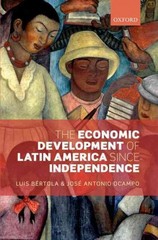Question
Part 1: Read an excerpt and then answer the questions below : The maker of Marlboro cigarettes spent more than $16 million to block a
Part 1: Read an excerpt and then answer the questions below:
"The maker of Marlboro cigarettes spent more than $16 million to block a tobacco tax increase in Colorado four years ago. Now it could benefit from the passage of a question on the November ballot that would dramatically increase the cost of cigarettes- a question that the company helped write.
The company, Altria, was part of the negotiations that led to 11th-hour legislation House Bill 1427 that placed the question on the 2020 ballot. If passed, it will raise taxes on nicotine products across the board over the next several years, including more than tripling the taxes on a pack of cigarettes.
The question also would require retailers in Colorado to sell cigarettes for a minimum of $7 a pack, or $70 a carton, starting in January. Then, in 2024, that price-floor mandate rises to $7.50 a pack and $75 a carton.
The discount tobacco company Liggett Group, which makes the cigarette brands Pyramid and Grand Prix, is slated to contend the change will give Altria a major sales advantage and wipe away its market share."
1. Liggett, the discount tobacco company, claims that the minimum price-floor mandate of $7 will give Altria, maker of Marlboro, "a major sales advantage." What would a price floor do?
2. What can you say about the two different cigarette brands based on how they reacted to a possible minimum price floor ballot initiative. Note- you do not need knowledge of cigarette brands to answer this question! Focus on the laws of supply and demand, substitutes/complements, inferior/luxury goods, and elastic/inelastic demand in your answer. Part 2: Please read: Seattle soda tax brings in more than $10M in first six months
https://www.seattletimes.com/seattle-news/politics/seattle-soda-tax-brings-in-more-than-10m-in-first-six-months/?utm_source=EX&utm_medium=News&utm_campaign=MRUEmail&utm_content=seattle-soda-tax-brings-in-more-than-10m-in-first-six-months&__s=clknigd20iwd43d3bg0u
Please address the following: 3. Name and discuss two reasons why a governing body would want to tax sugar-sweetened beverages.
4. The news article linked above states:
"...the tax could generate more money this year than anticipated."
5. If this tax does indeed generate more money than expected, what is known about the price elasticity of demand with regard to sugar-sweetened beverages in Seattle?
6. "Though Seattle's tax is being paid by distributors, they can choose to pass the tax on to supermarkets, convenience stores and restaurants, which can pass it on to their customers." By referencing the above quote, please discuss the term tax incidence.
Step by Step Solution
There are 3 Steps involved in it
Step: 1

Get Instant Access to Expert-Tailored Solutions
See step-by-step solutions with expert insights and AI powered tools for academic success
Step: 2

Step: 3

Ace Your Homework with AI
Get the answers you need in no time with our AI-driven, step-by-step assistance
Get Started


